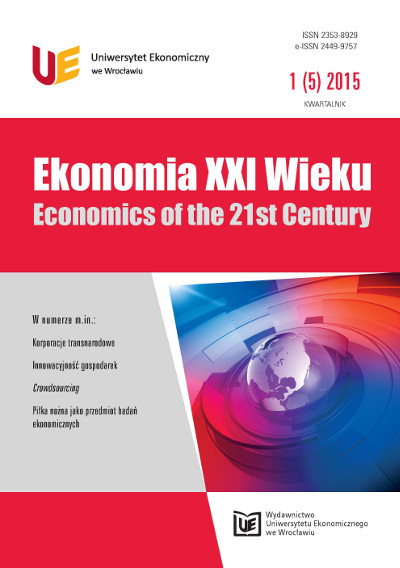Weryfikacja cech charakteryzujących działalność innowacyjną i innowacje w firmach usługowych na podstawie wyników badań community innovation survey
Verification of characteristics of innovation activity and innovations in service companies based on the results of the community innovation survey
Author(s): Joanna Wyszkowska-KunaSubject(s): Economy
Published by: Wydawnictwo Uniwersytetu Ekonomicznego we Wrocławiu
Keywords: services; innovation activity; innovations in service firms
Summary/Abstract: The purpose of this article is the empirical verification of characteristics of innovation activity and innovation in service companies based on the results of the Community Innovation Survey. In the first part of the study the characteristics of services that determine the nature of innovation activity and innovation model in service companies are indicated. In the following part the empirical verification of these features, based on the results of the CIS for all EU countries, is carried out. Including into the study all EU countries gives a large number of observations, and it should be noted that the previous studies in this area have been conducted based on the data for the individual countries. The research method is to compare the innovative activities of industrial and service companies in the EU countries, which shows the possible differences in the nature of innovation activities of companies from both sectors. This allows to answer the question whether the innovative activities of service companies can be studied using the same tools that are used in industrial companies (assimilation approach) or to develop new methods for measuring innovative activity − (a) specific to service companies (demarcation approach) or (b) relating both to companies from both sectors (integration approach). In the article all the characteristics of innovation activity in service companies are positively verified. The exception is an interactive nature of innovation activities in service companies. It is important to pay attention to the data from the last two CIS rounds, from which we can find out that non-technological innovations are equally important in industrial companies, as well as in service companies, and both types of innovation are generally complementary to each other. It follows an interesting conclusion that it is impossible to make a simple distinction between technological innovation in industrial companies and non-technological one in service companies, and research on innovation activities should rather be based on an integration approach. Unfortunately, the dominance of assimilation approach in CIS makes innovative activities of service companies are still not thoroughly examined and fully recognized. Therefore, despite the positive changes in the quality of the data, which can be seen when comparing the results of the latest and possibly the oldest CIS rounds, further changes are necessary in this area. Proposals for such changes are indicated by the author.
Journal: Ekonomia XXI Wieku
- Issue Year: 2015
- Issue No: 05
- Page Range: 101-123
- Page Count: 23

